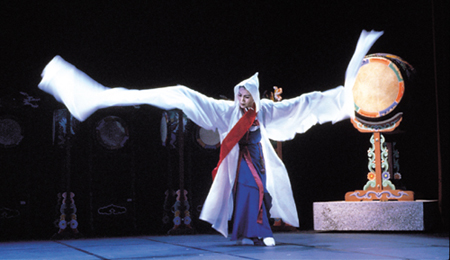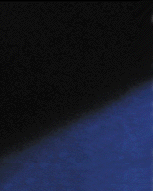|
|
|
| Korean Traditional Dance, Seungmu (Buddhist dance) |
| Seungmu is one of Korea's most significant folk dances. It draws its meaning from Buddhist rituals. This dance is divided into two main parts, the first part being the dance itself and the second, the part where the dancer reveals two drum sticks and starts drumming on a big Buk (barrel drum) hanging inside a wooden stand. The elegant movements of the soloist when dancing are underlined by the special costume, a white gown with long sleeves.
|
|
 |
The Spirit of Seungmu
This dance conveys the temptations of a monk trying to overcome worldly desires, corrupt thoughts, pain and suffering.
Music, and more specifically rhythm, emphasizes the movements of the dancer, and hence the meaning of the dance itself. When the dancer reaches the final part and starts drumming, a row of other dancers appear and join in drumming the Three Drum Dance alongside him. This last part of the dance symbolizes the monks enlightenment and his defeat over pain and suffering.
History of the Seungmu Dance
It was only recently (in the 18th or 19th century) that Seungmu started to be known as an art form. There are many theories regarding the origins of the dance. One suggests that it represents a famous female dancer of the Joseon period, who tried to get a priest to turn his back on Buddhism by dancing in front of him. Neither this, nor other theories have any concrete evidence to support them.
Movements of the Seungmu dance
The style of the Seungmu dance varies according to performers and location. The basic movements always remain pretty much the same. The choreography can be either noble and delicate in style, or wild and energetic.
Music of the Seungmu dance
The 'Yeombul', the 'Taryeong¡¯ and the 'Gutgeori' are all played to accompany the dance. 'Yeombul¡¯ is basically the sound of the repetitive chant that Buddhists use to memorize Buddha. 'Taryeong¡¯ originates from the Josun period, and 'Gutgeori¡¯ is traditionally used in Korean performances. The music is played with traditional Korean instruments such as piri, daegeum, haeguem, and janggu.
|
|
|
|
|
|
| 29-07-2001 |
|
|
|
|

